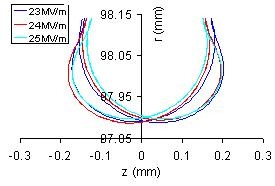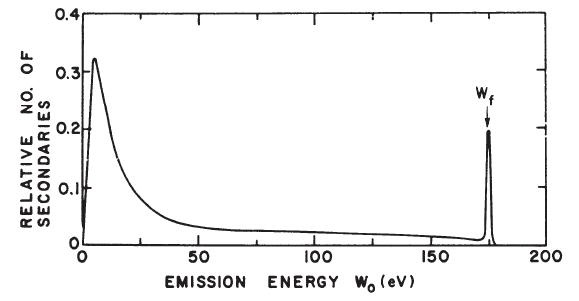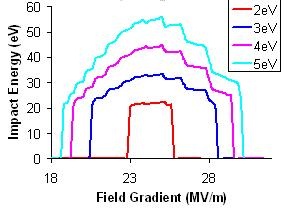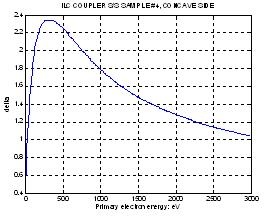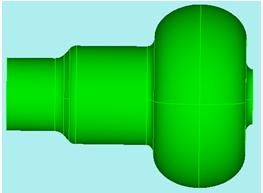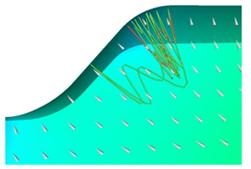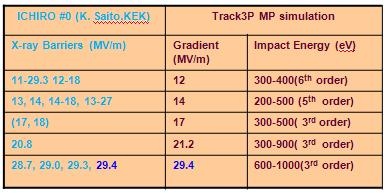| Panel | ||||||||||||
|---|---|---|---|---|---|---|---|---|---|---|---|---|
| ||||||||||||
|
MP simulation on ICHIRO cavity
During the rf processing, ICHIRO exhibits the problems of low achievable field gradient and experience long rf processing time. Based on this experiment setup, we build this track3P simulation model, which has 9 cells and end groups. Track3P is used to do MP study on the single cell and end groups.
MP simulation on ICHIRO cavity cell
Multipacting simulation on ICHIRO cavity cell shows there are resonant trajectories near the cavity equator. Below plot shows resonant trajectory examples at three different field level.
When electrons leave the surface they have an initial energy, typically the spectral energy distribution is peaked around 2eV and the average energy is 4-5 eV. In this MP simulation on ICHIRO cavity cell, the effects of initial kinetic energies on MP behaviors are investigated, the below plot shows the Impact energy as a function of field gradient for particles with resonant trajectories for intial kinetic energies from 2 eV to 5 eV, the impact energies range from 20 eV to 55 eV, there is a MP barrier around 23 MV/m field gradinent, based on the SEY curve provided KEK, this MP barrier is soft, which agree with RF tests, they found the some signles but can process through.
MP simulation on ICHIRO beampipe step
Multipacting simulation on beampipe step shows there are several MP barriers, the hardest is at 29.4 MV/m. Based on our simulation results and KEK?s measurement data, Saito construct below table which shows our simulation agree very well with their measurement, both have same MP barriers.


